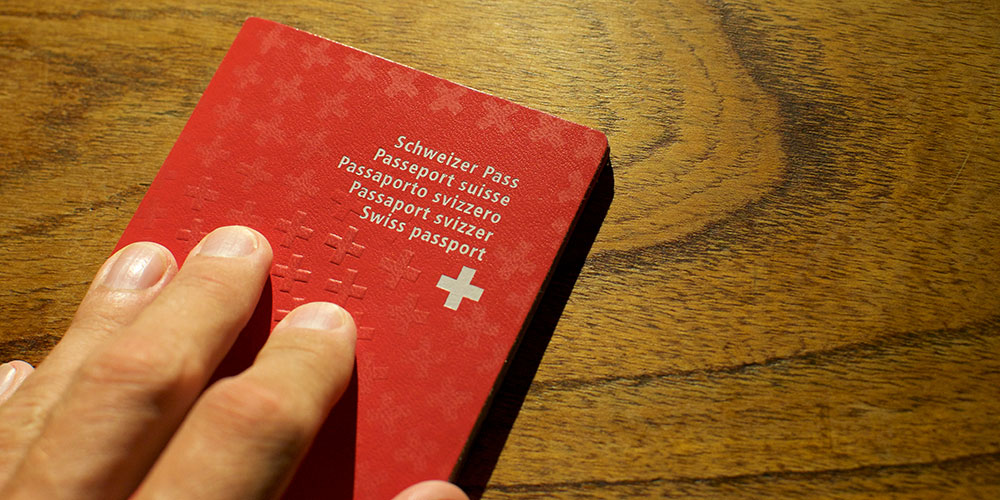Official Swiss Italian: a minority language with major recognition
Many people in Ticino are familiar with the feeling that their form of Italian is inferior to that spoken in the peninsula to the south. A linguistic and comparative analysis of official Swiss Italian has now shown that this is not the case. Translation practices at the federal level play a key role.
02 September 2024 | Céline Emch
Eight percent of the Swiss population speak Italian as a mother tongue. They live in Ticino and Graubünden, but also in areas of Switzerland officially designated as French-speaking or German-speaking. In fact, statistics show that there are more Italophones outside “Italian-speaking” Switzerland than within. Since Italian is one of the official languages of Switzerland, Italian speakers have the right to have official federal texts, such as the Federal Gazette and voting pamphlets for referendums, published in Italian rather than just German and French. Under the Languages Act of 2007, political and administrative public authorities at the federal level are required to communicate in the three official languages: German, French and Italian.
“There probably isn’t a minority language in the world with better legal protection than Italian has in Switzerland. In our country there is official, equal multilingualism,” says linguist Professor Angela Ferrari from the University of Basel. Together with her colleague Dr. Filippo Pecorari, she has started bringing the official Italian used by the public authorities into sharper focus in academia, institutions and society.
Official language: a reflection of society
To investigate the linguistic and pragmatic characteristics of the language, the researchers compiled a large corpus of official texts from different communicative contexts. They used this to compare official Swiss Italian with the official Italian of Italy, and with the other official languages of Switzerland.
In their analysis of these official texts, they found no significant differences at the grammatical level between the Swiss and Italian texts. However, the Swiss texts differ from Italian texts in some areas of vocabulary.
The researchers see the main driver for this in the political, social and cultural specifics of multilingual Switzerland, which leads to phenomena such as “loan translations”, in which words are transferred from one language to another. Take the term “drug”: Swiss Italian refers to “medicamento” (derived from the German “Medikament”), while in Italy they use the word “medicina”.
“These lexical peculiarities of Swiss Italian often lead to the assumption that it is inferior to the Italian of Italy – especially in the eyes of the Ticino population,” explains Professor Ferrari. “Of course, that’s not true; Italian is a pluricentric language. Our Italian is the language of an autonomous state, which has, and must have, the right to retain its own peculiarities, as is the case with German and French.”
Same language, different usage
In addition to these lexical peculiarities, there was a major difference in the official communication of the two countries in pragmatic terms. A comparison with texts from Italy shows that Swiss public authorities attach great importance to clarity. Their texts are targeted and informative, without overwhelming the reader; sentences are short and not too complex, the vocabulary is not overly technical. “We were amazed at how clearly comprehensible the Swiss texts are compared to the Italian ones,” says Dr. Pecorari.
Professor Ferrari explains: “Even the Accademia della Crusca, the highest authority for the Italian language, believes that official texts in Italy are unclear, bureaucratic and self-referential. You get the feeling that the institutions of Italy are only speaking to each other and not to the people who are supposed to read and understand these texts.”
The Swiss authorities’ efforts to make official texts accessible to everyone is also reflected in the decision to increasingly use “easy-to-read language”. This makes them easier to understand for people who have difficulty with standard texts for cognitive, psychiatric or social reasons. And there has been better outreach to young people since the coronavirus pandemic. “Texts have become more modern since then, as federal agencies expand their presence on social media like Instagram,” explains Dr. Pecorari. Videos, infographics, emojis, links and hashtags help communicate official content to young people faster and with greater appeal.
Translation as added value
The reason why official texts in the same language differ in Switzerland and Italy can be traced back to historical, political and cultural reasons, but it also lies in the origin of the texts. “The Government’s official texts in Swiss Italian are almost always translated from German or French. Surprisingly, this represents an opportunity for the quality of the texts,” explains Professor Ferrari. The Swiss Government’s translators act as “test subjects” in a way; they are the first to read the source text, and to try to understand it. “They have a different view of the text than its author. So translated texts are sometimes even clearer and better structured than the original,” says Ferrari.
Official texts are translated before the source text is final. The translation process sometimes results in the original German text being reviewed and changed. “If you’re having trouble translating, sometimes it’s because the original text is poorly written,” says Ferrari.
Italian still behind at federal level
Written Italian is one thing, but spoken Italian is a different matter. Angela Ferrari’s team is currently focusing on spoken official Italian, which is less often heard at the federal Government level. “We have noticed that the proportion of spoken Italian increases as soon as there is someone from Ticino in the Government. However, it is also apparent that the passages of a speech that are communicated in Italian never contain the most important information – instead they’re limited to greetings.” The fear and risk of not being understood by colleagues in Government and Parliament drives Italian-speaking politicians to express themselves in German or French.
Beyond compiling and analyzing a corpus of texts for scholarly research, Professor Ferrari also felt the need to take a closer look at real-life experience and share the results with the public authorities. “We didn’t conduct the research project in the laboratory, it arose in dialogue with people who work with official Italian: the Federal Chancellery, the cantonal chancelleries of Ticino and the Grisons, and the translators. This was the only way to understand the language in its depth and clarify its peculiarities.”





